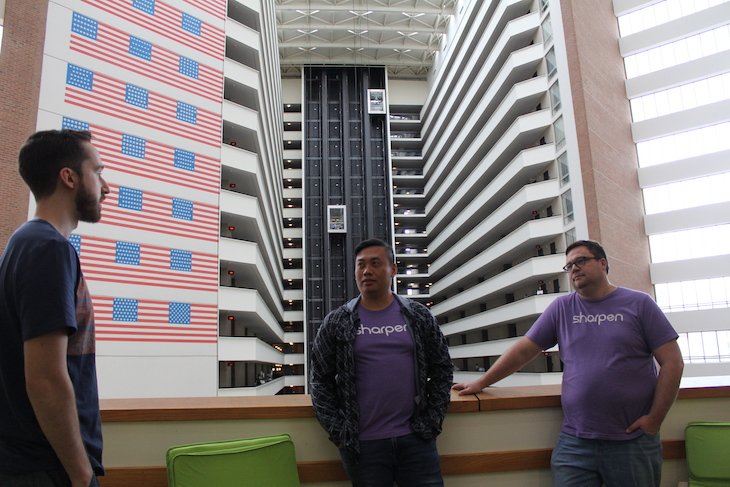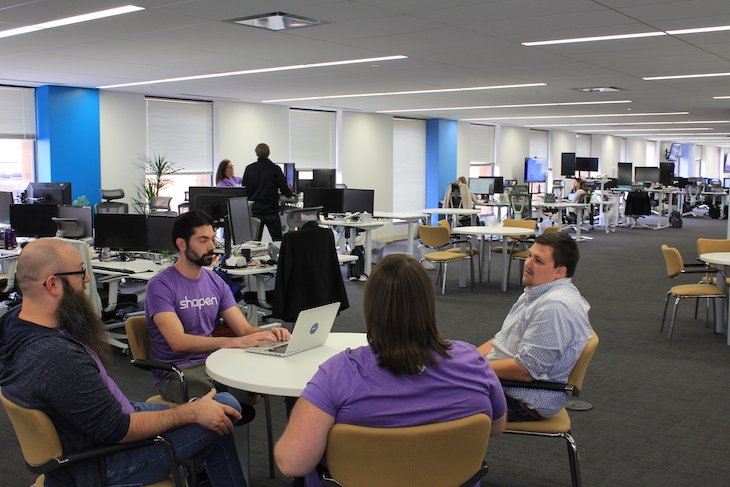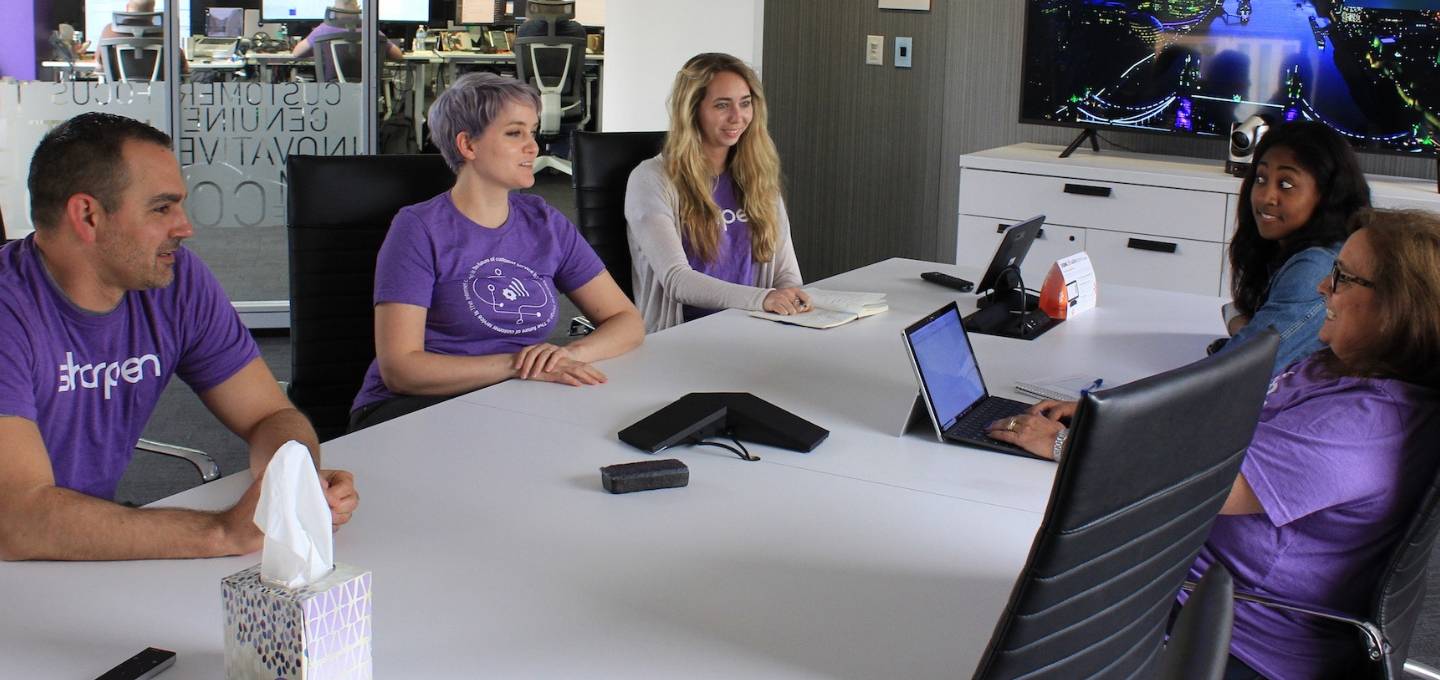Sharpen Technologies changes the game for customer service agents
Every day, more than 150 million customer service interactions occur in the U.S. Unfortunately, many of these interactions are frustrating.
With billions of dollars spent each year on improving customer satisfaction, why is the service experience still so bad? Sharpen Technologies may have the answer.
“A distressed customer can’t get help from someone else in distress,” says Murph Krajewski, VP of marketing at Sharpen. “Customer service agents are in distress because most don’t have the right technology to provide a fast, personalized and consistent experience.”
Sharpen is a contact center technology provider that’s tackling this issue with a unique agent-first approach.

“We’re addressing two long-standing customer service issues: stagnant CSAT scores and abysmal agent attrition,” says Murph. “These two things are costing contact centers a lot of money and they tend to be seen as problems. At Sharpen, we’ve looked at them as symptoms of the real problem: the agent experience. If we can empower agents with technology that’s both effective and easy to use, then they can meet customer expectations with confidence.”
Here’s a common scenario for an agent. As soon as an agent hangs up a call, another call comes in. This time, the customer expects the agent to know about their angry tweet sent an hour ago, or about the text message they sent two months ago when they faced the same issue they’re calling about today. Without the right technology to get the information they need the moment they need it, agents are left stranded unable to solve customer problems. Over time, they’re likely to feel increasingly distressed and demoralized, making them prime candidates to quit.
To change this scenario, Sharpen has created an omnichannel, cloud contact center solution that puts the agent experience front and center. This means that agents get one simple screen on their desktop that displays the customer’s entire journey across text messages, Twitter, web chats, emails, phone calls and any other communication type. During an interaction, agents can switch back and forth between communication types in the same screen without losing associated customer information. This lets agents solve problems faster, which helps keep customers happy.
In addition to its unified, omnichannel agent desktop, Sharpen is attacking the problem with deep analytics, flexible reporting, and accurate, actionable insights. It’s even reinventing the way agents are evaluated.

Sharpen’s proprietary Agent Experience Score (AXS) gives contact centers a new way to measure and track not only performance, but overall agent well-being.
“We wanted to redefine traditional contact center metrics to give a more holistic and human view of the agent,” says Mike Simmons, Sharpen’s chairman and CEO. “So we started thinking about defining agent empowerment and then developed an agent experience score that incorporated this. This is one example of the tools we offer to help customers effectively grow and develop their agents so they can be more successful.”
According to Mike though, Sharpen’s agent-first approach doesn’t stop at technology. “We help contact centers create an agent-focused culture by providing expert high-touch services and support that take into consideration people, processes and technology. This is unique in our industry and something else that sets us apart.”
Today, many of Sharpen’s clients boast an average 95% CSAT score, along with awards that recognize superior customer service.
“There’s a strong correlation between agent satisfaction and customer satisfaction,” says Adam Settle, VP of product. “Ninety-plus percent of customers say that an agent’s mood and demeanor impact the entire experience they have. If we can empower the agent with customer information and tools, they become less stressed and their confidence transitions to a positive customer experience.”
In one example, a Sharpen customer used the solution to receive proof of damage to a product using a photo via a text message while on a call with the customer. This let agents almost immediately approve a replacement product and inform the customer it was on the way. That brought a once month-long process down to less than 45 minutes.
What’s remarkable about Sharpen’s solution is the huge bottom line impact it can have based on the costs associated with agent attrition. According to Murph, “a small to medium sized contact center can lose upwards of $300,000 a year with typical turnover rates. It’s been a problem for so long that a lot of contact centers have stopped trying to solve it and instead just bake it in as a cost of doing business.”
By keeping agents happy with tools that empower, Sharpen is helping put a major dent in attrition, which is dramatically lowering the cost of doing business for its customers. This benefit also extends to more effectively attracting and training agents.
Sharpen is competing at the moment with companies that have billion-dollar market caps. But by approaching customer service with an agent-first focus, they’re establishing a serious competitive differentiation.
The company is also making a name for itself by continuing to build a culture focused on meaningful work, transparency and community. As a testament to its success, Sharpen was named among the 2018 Best Places to Work in Indiana and was ranked among Inc. magazine’s 2019 Best Workplaces.
To further strengthen its competitive position, Sharpen has significantly beefed up its leadership team, which is now backed by over 125 years of tech industry experience between its board of directors and advisors. Sharpen also secured $15 million in capital growth funding earlier this year. The company plans to use it to boost sales and marketing initiatives and hire more talent in product development and client success groups.
Beyond the desire to grow and increase revenue, however, Sharpen sees its mission as making the world a better place by creating happy agents who exponentially can create happier customers.
“If we can increase the quality of an agent’s experience across 150 million interactions every day and reduce the stress in those conversations for all involved, then we can have a real impact on the general state of being in the world,” says Murph. “There’s a bigger value to it all, and we don’t want to lose sight of that.”



